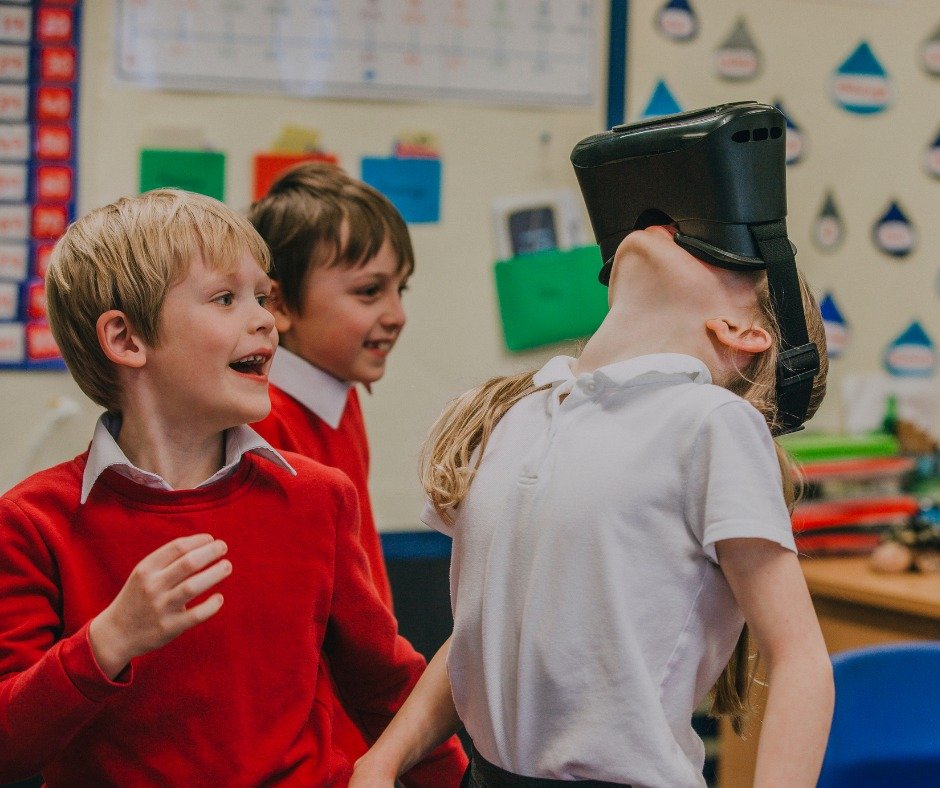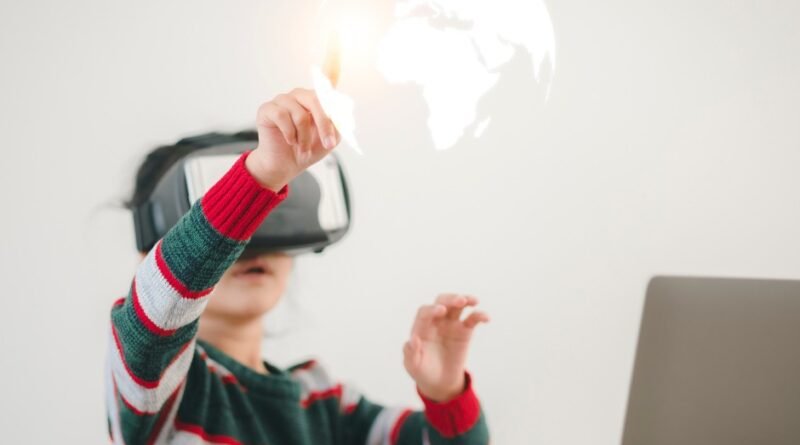AR in Learning
Tarmo Toikkanen, Head of Operations, Code School Finland
Augmented Reality (AR) is an interactive experience of a real-world environment. In AR, the objects that reside in the real world are enhanced by computer-generated perceptual information (source: Wikipedia). The surroundings of a person are augmented with additional information that would not otherwise be present.
One could argue that humans have augmented their surroundings long before computers: street signs give helpful augmented navigation information even if they are not computer generated.
About the technologies
Modern AR usually requires the use of specialised glasses or headsets that allow a computer to generate visual information into the user’s field of vision. Different hardware setups are needed for different technologies:
- Augmented reality (AR): Allows the user to see their surroundings through glass surfaces. Overlays additional transparent information on top of the view.
- Virtual reality (VR): Blocks the user’s vision of their surroundings. Presents a computer generated view for the user that has nothing to do with the physical world around them.
- Mixed reality (MR): Blocks the user’s vision of their surroundings. Includes cameras that record the view in front of the user. The user is presented with the camera view of their surroundings, with additional information (augments) added, or some aspects of reality removed.
What is common to all these technologies is head position tracking. Sets of gyroscopes, beacons or other means are used to accurately follow the user’s head orientation, movement and location. The goal is to have any computer generated overlays to move in unison with head movements, creating the illusion that the generated view is real in the surrounding environment.
Some technologies may also include eye tracking and blink tracking, which allows the system to react according to what the user is watching at the moment.

About use cases
Digitally augmented reality becomes useful when the physical surroundings of the user benefit from augmenting. One common example is navigation: tracking the user’s geographic location and telling them which direction they should be going. In modern cars, navigation systems are already moving from a car dashboard onto the windshield to improve safety, as the driver does not need to glance away from the road.
In many situations having the augmented information without having to hold a separate device makes work more efficient. Typically this means manual situations where both hands are needed to perform the task, for example: machine repairs, cooking, crafts, or status monitoring.
For safety reasons the user may need to keep their eyes on the task at hand at all times. Any time-sensitive unpausable tasks that may result in damages if done incorrectly are such situations, for example: car navigation, heavy machinery operation, or welding.
AR in learning – and for learning
In learning scenarios, AR may be useful and add to the learning experience. For practical exercising in vocational training, AR can find its place in helping students perform complex manual tasks with accurate just-in-time assistance. For example, operations such as machine repairs could be practised with an AR system displaying contextual guidance through the exercise. One could compare a good AR guide to a teacher that would be talking the learner through a complex procedure.
When thinking about VR, another valid learning scenario is experiential learning. Experiencing for example how it feels to be in a refugee camp is much more powerful when done in a VR environment than looking at videos. VR allows the user to bodily feel as if they are present in that environment.
Schools will have a key role in building a future talent force
While everyday utilisation of AR technology in school classrooms may still not be viable today, understanding the possibilities that AR will bring is important for today’s students. As with any technology, learning by doing is the key. Availability of affordable AR glasses will make it possible to explore the technology’s opportunities in practice. Schools will need high-quality teaching content and low-barrier teacher training in order to provide instruction to build up student interest and a future AR talent force.
About Code School Finland
Code School Finland helps educators globally to implement a future skills technology program by developing teachers’ professional competence and providing teaching materials. The CSF curriculum introduces coding, robotics and artificial intelligence for K-12 while putting a strong emphasis on the development of 21st century skills.
For more information on Code School Finland visit www.codeschool.fi or contact Kaisu Pallaskallio, CEO
Tel. +358 44 355 7355
kaisu@codeschool.fi
